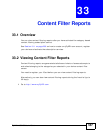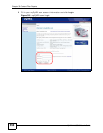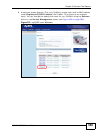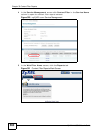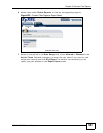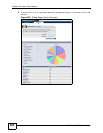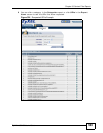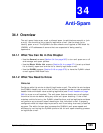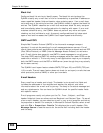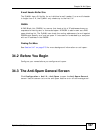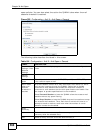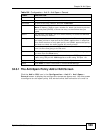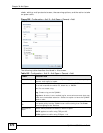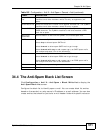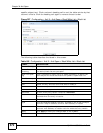
ZyWALL USG 50 User’s Guide
565
CHAPTER 34
Anti-Spam
34.1 Overview
The anti-spam feature can mark or discard spam (unsolicited commercial or junk
e-mail). Use the white list to identify legitimate e-mail. Use the black list to
identify spam e-mail. The ZyWALL can also check e-mail against a DNS black list
(DNSBL) of IP addresses of servers that are suspected of being used by
spammers.
34.1.1 What You Can Do in this Chapter
•Use the General screens (Section 34.3 on page 567) to turn anti-spam on or off
and manage anti-spam policies.
•Use the Black/White List screens (Section 34.4 on page 571) to set up a black
list to identify spam and a white list to identify legitimate e-mail.
•Use the DNSBL screens (Section 34.6 on page 576) to have the ZyWALL check
e-mail against DNS Black Lists.
34.1.2 What You Need to Know
White list
Configure white list entries to identify legitimate e-mail. The white list entries have
the ZyWALL classify any e-mail that is from a specified sender or uses a specified
header field and header value as being legitimate (see E-mail Headers on page
566 for more on mail headers). The anti-spam feature checks an e-mail against
the white list entries before doing any other anti-spam checking. If the e-mail
matches a white list entry, the ZyWALL classifies the e-mail as legitimate and does
not perform any more anti-spam checking on that individual e-mail. A properly
configured white list helps keep important e-mail from being incorrectly classified
as spam. The white list can also increases the ZyWALL’s anti-spam speed and
efficiency by not having the ZyWALL perform the full anti-spam checking process
on legitimate e-mail.



